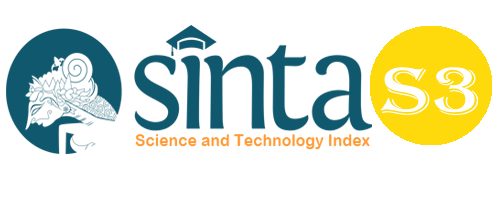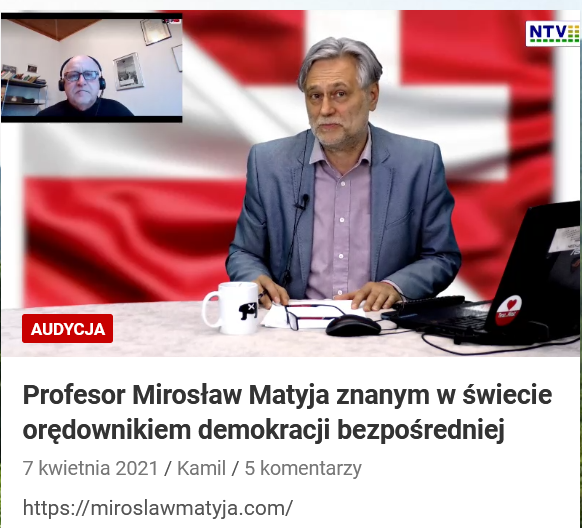Diamond Fraud Dimension Analysis in Detecting Financial Statement Fraud in Companies Manufacturers Listed on the Indonesia Stock Exchange
Abstract
The aim of this research is to analyze and give the empirical evidence of the influence between fraud dimensions such as Pressure, Opportunity, rationalization, and Capability against Financial Statement Fraud. The population of this research is the manufacturing company listed on the Indonesian stock exchange in the period of 2017-2019. The researcher used purposive sampling as the method of choosing the sample with 302 data selections. For the data analysis, the researcher used multiple linear regression. The result of this research proved that financial stability has influenced to the financial statement fraud. The variable of external pressure has not been influenced to the financial statement fraud. Then the variable of financial targets has been influenced with the financial statement fraud. The variable of nature of industry has influenced to the financial statement fraud. Next, the variable of monitoring effectiveness has not been influenced to the financial statement fraud. The variable related party transaction has not been influenced to the financial statement fraud. The variable of auditor change has not been influenced to the financial statement fraud. The variable director change has not been influenced to the financial statement fraud.
Keywords
Full Text:
PDFReferences
ACFE. (2016). Report to the Nation on Occupational Fraud and Abuse. Austin, Texas: Association of Certified Fraud Examiners.
Afiezan, A., et.al. (2020). The Effect of Free Cash Flow, Company Size, Profitability and Liquidity on Debt Policy for Manufacturing Companies Listed on IDX in 2016-2019 Periods. Budapest International Research and Critics Institute-Journal (BIRCI-Journal) Vol 3 (4): 4005-4018.
AICPA. 2007. Consideration of Fraud in a Financial Statement Audit AUSection316. New York: PCAOB Standards and Related Rules.
Albrecht et al. (2011). “Asset Misappropriation Research White Paper for the Institute for Fraud Prevention”. Cengnge Learning. E-Books.
Andayani, Tutut Dwi, 2010, “The Influence of the Characteristics of an Independent Board of Commissioners on Earnings Management (Study on Manufacturing Companies Listed on the Indonesia Stock Exchange)”, Thesis, Faculty of Economics, Diponegoro University.
Ardiyani, Susmita & Nanik Sri Utaminingsih. 2015. Analysis of Determinants of Financial Statements through the Fraud Triangle Approach. ISSN: 2252-6765. State University of Semarang.
Ardyansyah, Danis. 2014. The Effect of Size, Leverage, Profitability, Capital Intensity Ratio and Independent Commissioner on the Effective Tax Rate (ETR). Faculty of Economics and Business, Diponegoro University. Semarang.
Aulia, Risa. 2018. The Influence of Corporate Social Responsibility (CSR) and Good Corporate Governance (GCG) on Stock Prices. Essay. Mercu Buana University. Yogyakarta.
Badera, ID (2019). Fraud Diamond Analysis in Detecting Fraudulent Financial Reporting (Study on Indonesian Capital Market). International Journal of Sciences: Basic and Applied Research (IJSBAR), 47 No.2, 84-95.
Chen, KY, and RJ Elder. 2007.”Fraud Risk Factors and the Likelihood of Fraudulent Financial Reporting: Evidence from Statement on Auditing Standards No. 43. In Taiwan”. Working Papers. National Taiwan University and Syracuse University.
Christian.N, BY (2019). Analysis of Fraud Triangle, Fraud Diamond and Fraud Pentagon Theory to Detecting Corporate Fraud in Indonesia. The International Journal of Business Management and Technology, Volume 3 (4 July – August 2019).
Cressey, D. 1953. Other People's Money; a Study in the Social Psychology of Embezzlement. Glencoe, IL, Free Press.
Faidah, Fatihatul and Titiek Suwarti. (2018). Fraud Financial Statement Detection with Pentagon Fraud Analysis on Manufacturing Companies listed on the Indonesia Stock Exchange for the 2015-2017 Period. Dynamics of Accounting, Finance and Banking, Vol. 7, No. 2.
Ghafoor, Abdul, 2019. Eliciting factor for corporate fraud in emerging markets: Case of firms subject to enforcement action in Malaysia. Journal of Business Ethics (2019) 160:587–608
Ghozali, Imam. 2016. Application of Multivariete Analysis with IBM SPSS 23 Program (8th Edition). VIII Printing. Semarang: Diponegoro University Publishing Agency.
Halim, Meiden, and Tobing, 2005, "The Effect of Earnings Management on the Level of Financial Statement Disclosure in Manufacturing Companies Included in the LQ-45 Index", National Accounting Symposium VIII of the Indonesian Accounting Association, pp: 117-135.
Handoko, BL, & Natasya. 2019. Fraud Diamond model for fraudulent financial statement detection. International Journal of Recent Technology and Engineering, Vol.8, No.3
HASNAN, S. (2016). Related Party Transactions and Earnings Quality: Does Corporate Governance Matter? International Journal of Economics and Management, 189 – 219.
Indonesian Institute of Accountants. Statement of Financial Accounting Standards No.1 (Revised 2009): Presentation of Financial Statements”, IAI, Jakarta.
Indonesian Government Internal Auditor Audit Standards (SA-AIPI). 2013. Indonesian Government Internal Auditor Association (AAIPI).
Indarto, SL (2016). Fraud Diamond: Detection Analysis on the Fraudulent Financial Reporting. Risk Governance & Control: Financial Markets & Institutions, 6 (4).
Iqbal, M. (2016). Analysis of the Influence of Fraud Triangle Factors on Fraud Financial Statements in Property and Real Estate Companies Listed on the Indonesia Stock Exchange. 2016 Scholars National Seminar. Faculty of Economics and Business, Trisakti University.
Jensen, M., C., and W. Meckling, 1976. “Theory of the firm: Managerial behavior, agency cost and ownership structure”, Journal of Finance Economic 3: 305-3
Jones, Jennifer J, 1991. Earnings Management during Import Relief Investigations. Journal of Accounting Research, Vol 29, No.2 1991, p.193 – 228.
Juvita, DS (2013). The Effect of Corporate Governance on the Relationship between the Amount and Disclosure of Related Party Transactions with Earnings Management: Empirical Study of Changes in PSAK No. 7. Journal of Accounting & Auditing, Volume 10 No. 1, 45 - 67.
Katharina, N., et.al. (2021). Influence Capital Structure, Liquidity, Size the Company, Debt Policy and Profitability towards Corporate Value on Property Company, Real Estate and Building Construction Listed on the Stock Exchange Indonesia Period 2016-2019. Budapest International Research and Critics Institute-Journal (BIRCI-Journal) Vol 4 (2): 2241-2256.
Kieso, Donald E., Jerry J. Weygandt, and Terry D. Warfield, 2007. Intermediate Accounting, Emil Salim Translation, Volume 1, Tenth Edition, Erlangga Publisher, Jakarta (Kuncoro, 2007)
Kuncoro, M. (2007). Quantitative Methods: Theory and Applications to Business and Economics. Yogyakarta: UPP STIM YKPN.
Loebbecke, JK, Eining, MM and Willingham, JJ, (1989) “Auditors' Experience with Material Irregularities: Frequency, Nature, and Detectability.” Auditing: A Journal of Practice & Theory, Vol. 9, p. 1- 28.
Lou, YI, & Wang, ML (2009). Fraud Risk Factor of the Fraud Triangle Assessing the Likelihood of Fraudulent Financial Reporting. Journal of Business and Economic Research. Vol.7 (2), 62-66.
Luayyi, Sri. 2010. Agency Theory and Earnings Management from the Ethical Viewpoint of Managers. Journal. Malang: FE Universitas Brawijaya. 199-216
Manurung, DTH, & Hardika, AL (2015). Analysis of factors that influence financial statement fraud in the perspective fraud diamond: Empirical study on banking companies listed on the Indonesia Stock Exchange year 2012 to 2014. International Conference on Accounting Studies (ICAS), (August), 280–286.
MBM Mintara & AN Hapsari. (2021). Fraud Detection of Financial Reporting Through the Fraud Pentagon Framework. Accounting Perspective Volume 4.
Merissa Yesiariani, IR (2017). Detection of financial statement fraud: Testing with fraud diamond. Indonesian Journal of Accounting & Auditing.
Nurrahmasari, Afifah. (2020). Detection of financial statement fraud with fraud triangle analysis: institutional ownership as a moderating variable. Department of Accounting, Faculty of Economics and Business, State University of Semarang.
Omukaga, Kizito Ojilong. (2019). “is the fraud diamond perspective valid in kenya?” United State International Chandaria School of business Nairobi, Kenya.
Putra, WM (2019). Analysis of Financial Fraud Using the Fraud Diamond Model with Corporate Governance as the Moderating Variable. Advances in Economics, Business and Management Research, 102.
Rachmawati, KK and Marsono. 2014. “The Influence of Factors in the Fraud Triangle Perspective on Fraudulent Financial Reporting (Case Study on Companies Based on Bapepem Sanctions for the period 2008-2012”). Diponegoro Journal of Accounting. Vol.3, No.2.
Rezaee, Z. (2002). Financial Statement Fraud: Motives, Methods. Cases and Detection. Dissertation. com: Florida.
Rezaee, Zabihollah & Richard Riley. 2009. Financial Statement Fraud: Prevention and Detection. Second Edition. United State of America: John Wiley
Saleh, A., Dalimunthe, A.H., and Lubis, F.H. (2019). Development of Banking CSR Model for Community Empowerment Slum Area in Medan City. Budapest International Research and Critics Institute-Journal (BIRCI-Journal) Vol 2 (3): 39-50.
Scoot, William, R. 2015. Financial Accounting Theory, 7th Edition, New Jersey: Prentice-Hall, Inc.
Singarimbun, Masri and Shofian Effendi. 1995. Survey Research Methods. Jakarta: LP3ES.
Skousen, C. J, Smith, K. R, & Wright, C. (2008). Contemporaneous risk factors and the prediction of financial statement fraud. Journal of Forensic Accounting, IX, 37-62.
Skousen, CJ, KR Smith, and CJ Wright. 2009. “Detecting and Predecting Financial Statement Fraud: The Effectiveness of the Fraud Triangle and SAS No. 99". Corporate Governance and Firm Performance Advances in Financial Economists, Vol. 13 h. 53-81.
Statement on Auditing Standards (SAS). No. 99. (2003). “Consideration of Fraud in a Financial Statement Audit. Journal of Accountancy. Vol. 1
Sugiyono. 2012. Business Research Methods (16th Issue, March 2012). Bandung.
Sulistyanto, Sri. 2008. Earnings Management: Theory and Empirical Model. Jakarta: Grasindo Publisher
Summers, S., & Sweeney, J. 1998. “Fraudulently Misstated Financial Statements and Insider Trading: AnEmpirical Analysis”. The Accounting Review. Volume 73 No. 1.
Sunardi, S. and Amin, MN (2018), “Fraud detection of financial statements by using fraud diamond perspective”, International Journal of Development and Sustainability, Vol. 7 No. 3, pp. 878-891.
Surjaatmaja, L. (2018). Detecting Fraudulent Financial Statements Using Fraud Triangle: Capability as Moderating Variable. International Conference on Economics, Business and Economic Education (pp. 945-956). KnE Social Sciences.
Tarmizi Achmad, ID (2018). Fraudulent Financial Reporting Based on Fraud Diamond Theory:. JIAFE (Scientific Journal of Accounting, Faculty of Economics), 135-150
Tuanakotta, Theodorus M. 2013. Forensic Accounting and Investigative Auditing Edition2. Jakarta: Salemba Empat.
Umar, H. (1999). Research Methodology Applications in Marketing. Jakarta: PT. Library Gramedia.
Victoria, ME (2018). Fraudulent Financial Reporting: a Quantitative Study of the Fraud Triangle Theory and the Magnitude of Misstatement. United States: by ProQuest LLC.
Wahyuningtyas, Fauziah. (2016). Analysis of Fraud Diamond Elements as a Determinant of Fraud Financial Statements in Banking Companies in Indonesia. Airlangga Library.
Wailan'an, Evi Juita. (2019). The effect of diamond fraud on the detection of financial statement fraud with the audit committee as a moderating variable in manufacturing companies listed on the Indonesian stock exchange for the period 2015 – 2017. Master of Accounting, Faculty of Economics and Business, University of North Sumatra.
Wolfe, David T. Dana R. Hermanson. 2004. The Fraud Diamond: Considering the Four Elements of Fraud. CPA Journal. 74.12:38-42.
Young, B. 2005. Related Party Transactions: Why They Matter and What is Disclosed. The Corporate Governance Advisor, Vol. 13, No. 4, h. 1-7.
DOI: https://doi.org/10.33258/birci.v5i1.4486
Article Metrics
Abstract view : 142 timesPDF - 64 times
Refbacks
- There are currently no refbacks.

This work is licensed under a Creative Commons Attribution-ShareAlike 4.0 International License.

This work is licensed under a Creative Commons Attribution-ShareAlike 4.0 International License.

_.gif)

















_.gif)



